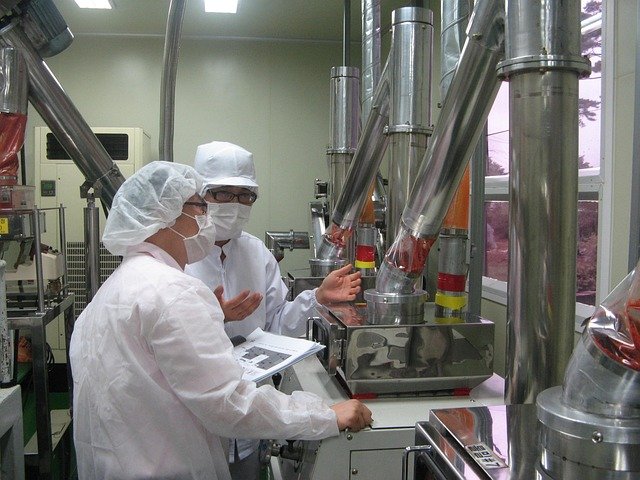A Guide To Packaging Jobs: Roles, Skills, and Pay
Packaging roles keep European supply chains moving across warehouses, food plants and e‑commerce hubs. This guide outlines core tasks, entry routes with minimal experience, safety standards, shift patterns and typical pay ranges to help evaluate positions that match your goals across the EU.

Entry Routes with Minimal Experience
Packaging jobs typically feature low barriers to entry, making them accessible to individuals with limited work history or formal education. Most entry-level positions require basic physical capabilities, attention to detail, and the ability to follow instructions precisely. Many employers provide on-the-job training, focusing on company-specific procedures and equipment operation rather than expecting candidates to arrive with industry knowledge.
Common entry-level packaging roles include packaging operators, production line workers, and warehouse packers. These positions typically require candidates to demonstrate reliability, basic numeracy, and sometimes manual dexterity. While formal qualifications are rarely mandatory, some employers may request a high school diploma or equivalent. The straightforward application process often involves a basic interview and potentially a practical assessment to evaluate suitability for the physical aspects of the role.
Safety Standards and Shift Work
Safety protocols form a fundamental aspect of packaging environments. Workers typically receive comprehensive training on machinery operation, proper lifting techniques, hazard identification, and emergency procedures. Personal protective equipment (PPE) requirements vary by sector but commonly include items such as safety footwear, high-visibility clothing, hairnets, and gloves.
Shift patterns in packaging facilities frequently operate on a 24/7 schedule, particularly in manufacturing environments with continuous production. Workers may encounter various shift patterns including:
-
Fixed shifts (consistent morning, afternoon, or night schedules)
-
Rotating shifts (cycling between different time periods)
-
Continental shifts (alternating blocks of days on and off)
-
Split shifts (working two separate periods within the same day)
These varied schedules can offer flexibility for some workers while presenting work-life balance challenges for others. Many facilities provide shift differentials—additional compensation for working less desirable hours such as nights or weekends—typically ranging from 5-15% above standard hourly rates.
Typical Pay Ranges and Locations
Packaging job compensation varies significantly based on location, industry sector, and position level. In the European market, entry-level packaging operators typically earn between €20,000-€28,000 annually, with higher rates in countries with stronger economies such as Germany, Denmark, and Switzerland compared to Eastern European locations.
Pay scales also differ markedly between industry sectors. Pharmaceutical and medical device packaging typically offers premium compensation due to stringent regulatory requirements and the critical nature of product safety. Food and beverage packaging positions generally provide mid-range compensation, while general merchandise and retail packaging roles tend toward the lower end of the wage spectrum.
Urban manufacturing centers typically offer more opportunities and slightly higher compensation than rural locations, though this difference may be offset by lower living costs in less populated areas. Major European packaging industry hubs include regions around Rotterdam (Netherlands), Hamburg (Germany), Antwerp (Belgium), and manufacturing clusters in Northern Italy.
Salary and Career Opportunities
Packaging careers follow several typical progression paths, each with corresponding salary increases. An entry-level packaging operator earning around €22,000 might advance to team leader (€28,000-€35,000), then to shift supervisor (€35,000-€45,000), and potentially to production manager (€45,000-€70,000+) with appropriate experience and training.
Specialized roles can offer alternative advancement opportunities. Quality control inspectors in packaging typically earn €25,000-€38,000, while packaging technicians responsible for machine setup and maintenance can earn €30,000-€45,000. For those pursuing technical specialization, packaging engineering positions command salaries of €45,000-€75,000, though these typically require relevant degree qualifications.
Career mobility exists between industry sectors, with transferable skills allowing movement from consumer goods to pharmaceuticals or food production. Each transition potentially offers salary increases as workers gain cross-sector expertise. Additionally, multinational packaging operations frequently provide opportunities for international assignments, offering both professional development and enhanced compensation packages.
Possibilities of Paid Training
Many employers in the packaging industry invest in workforce development through structured training programs. Entry-level packaging workers typically receive immediate paid training covering operational procedures, quality standards, and safety protocols during their initial employment period.
More formalized development opportunities often become available after demonstrating competence and commitment. These may include:
-
Machine operation certifications (paid for by the employer)
-
Technical maintenance training for specialized equipment
-
Quality assurance methodologies and compliance training
-
Leadership development programs for supervisory positions
-
Industry-recognized qualifications such as packaging technology certificates
Large manufacturing companies frequently implement apprenticeship schemes combining practical work experience with classroom learning, leading to recognized qualifications while earning a training wage. These programs typically run 1-3 years and cover areas such as packaging technology, machine operation, or maintenance engineering.
Additionally, many European countries offer government-supported training initiatives for manufacturing sectors, with packaging included as a priority area. These programs may provide subsidized or fully-funded training opportunities, particularly for youth entering the workforce or workers transitioning from declining industries.
Conclusion
Packaging jobs offer accessible entry points to manufacturing careers with clear progression pathways and relatively stable employment prospects. While entry-level positions require minimal qualifications, advancement opportunities exist through skill development, specialized training, and accumulating industry experience. The diverse shift patterns, consistent demand across multiple sectors, and widespread geographic distribution of packaging facilities make these roles versatile options for workers at various career stages.
Prices, rates, or cost estimates mentioned in this article are based on the latest available information but may change over time. Independent research is advised before making financial decisions.




